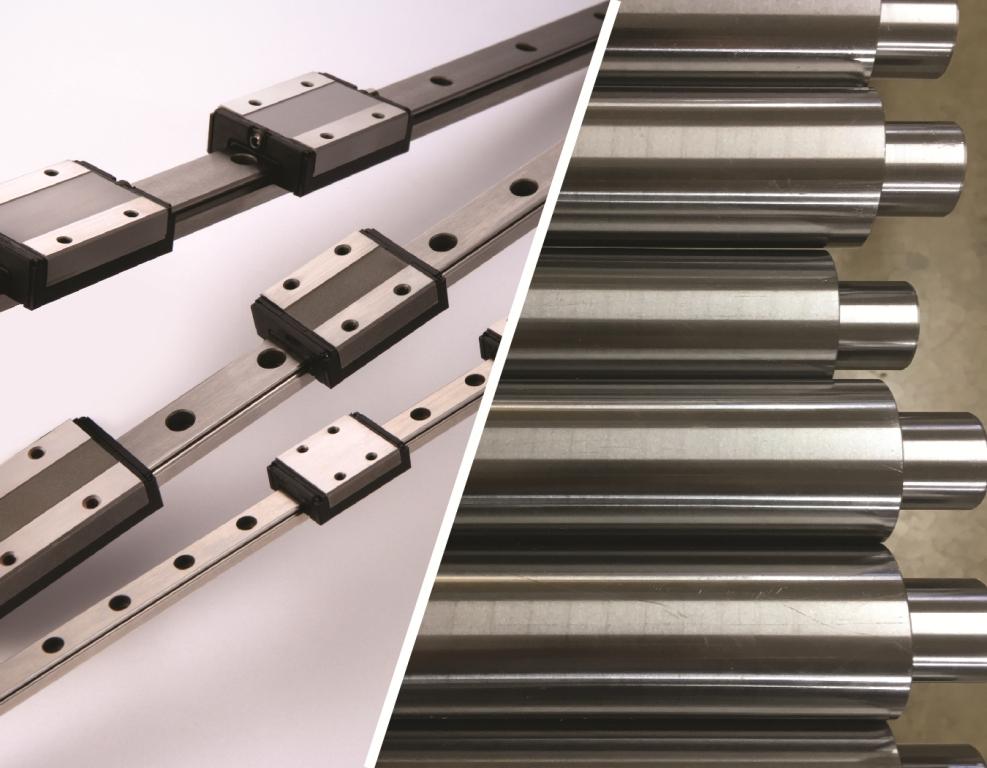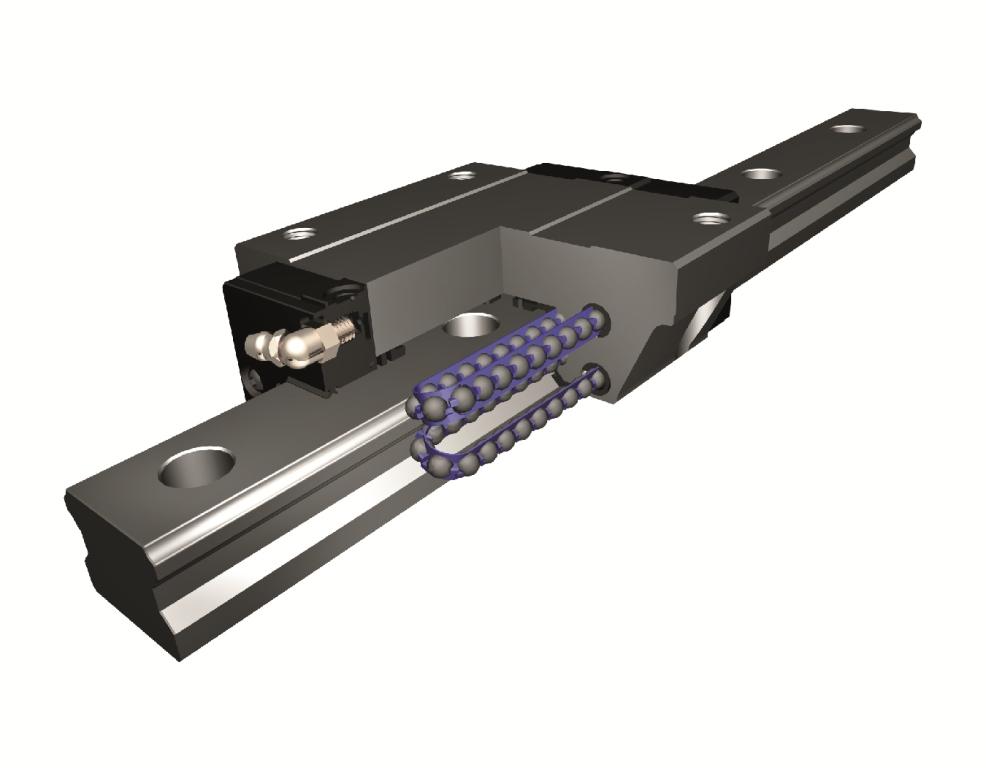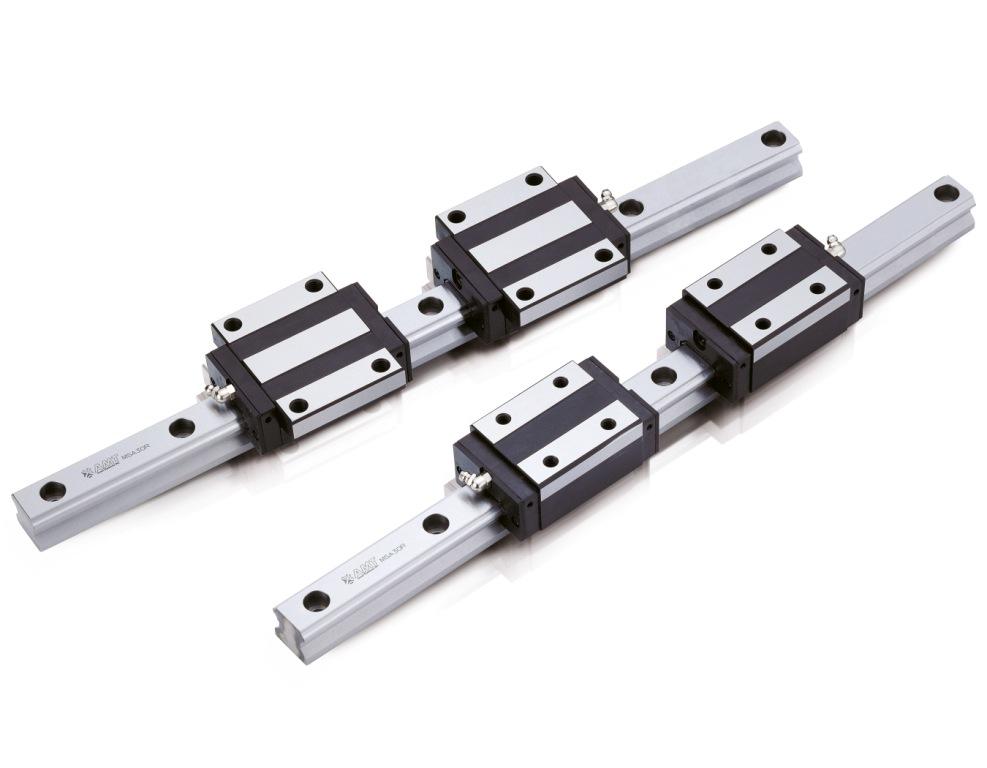22.04.2024
All about linear rail
A linear rail is a common linear motion component that allows for the smooth movement of loads along a single axis. Linear rails are indispensable within the bulk materials processing and handling sector where precise and reliable linear motion is required. Their versatility makes them suitable for multiple applications, including conveyor belts, moving floors, bucket elevators, shiploaders and more.
Over the 20 years Matara has been supplying linear rails, we have been asked just about every question you can conceive of, but there are certain questions that consistently reappear. Here, James Chanin, Managing Director, Matara UK Ltd answers the questions
How much weight can a linear rail support?
This is a bit of a ‘how long is a piece of string’ question as linear rails can be engineered to handle varying load capacities.
In bulk materials processing and handling, the weight-bearing ability of linear rails is a critical consideration for ensuring the safe and efficient movement of materials. For higher load applications, up to several tons, factors such as mounting arrangement, material type, rail design, supporting structures, and environmental conditions, must be taken into account in order to design a robust system that meets the specific load requirement. Certainly, sturdy material is required, such as steel or hardened alloys, to provide the necessary strength and rigidity.
Are linear rails better than linear rods/ shaft?
Linear rods (also known as shaft) and linear rails ultimately perform the same function of moving a load in a straight line from one point to another using an actuator. When comparing linear rails to traditional rod-based systems, linear rails offer several important advantages.
The first of these is a higher load capacity. Linear rails benefit from a more robust construction and their ball bearing systems distribute the load more efficiently, allowing for greater weight-bearing capabilities, which is necessary in bulk handling applications. Linear rails also offer enhanced rigidity, which is essential for maintaining stability and accuracy during linear movement, plus provide exceptional precision with high repeatability due to their well-engineered design.
The only real ‘disadvantage’, if you could call it that, to a linear rail is the cost: linear rails will nearly always cost more than rods.
Are linear rails quieter than rods?
This is a simple question to answer: yes! This is an important consideration for workplace safety.
One of the key factors contributing to their quiet operation is the use of smooth rolling elements, such as ball bearings or rollers. The rolling elements effectively reduce the contact area between the rail and the carriage, and distribute the load evenly along the rail to reduce the occurrence of sudden impacts, all of which minimise vibrations and friction that could result in noise.
Furthermore, the rail and carriage components are typically constructed with high precision, ensuring smooth and controlled movement along the straight line. By curtailing any play or misalignment, linear rails eliminate potential sources of noise that could arise from vibrations or unwanted movement.
It is worth noting that while linear rails offer quieter operation compared to other motion systems, the overall noise level can also be influenced by other factors such as the motor, gearbox, or the specific application itself. Proper installation, maintenance and lubrication of the linear rail system are also essential for ensuring optimal performance and reducing noise levels.
There is also the option of a caged system, whereby the roller or ball bearing is retained within a plastic cage to ensure there is no metal on metal contact, limiting the chance of noise.
Do linear rails work upside down?
Linear rails are designed to function reliably whether horizontally, vertically or inverted.
The ability of linear rails to work upside down is attributed to their construction and the technology used. Linear rails typically consist of a rail or track and a carriage that moves along it. The carriage incorporates rolling elements such as balls or rollers which distribute the load evenly and maintain contact with the rail at multiple points. This multi-point contact and the use of precision bearings enable the linear rails to provide stability, smoothness, and accuracy even when installed upside down. The rolling elements effectively counteract the force of gravity, allowing the carriage to move smoothly and maintain positional accuracy.
The ability to perform in various orientations makes linear rails ideally suited for applications where space is limited or unconventional orientations are required, such as to be found in bulk material conveyor systems. It enables engineers and designers to optimise the use of available space and explore innovative configurations.
However, it is essential to consider certain factors when using linear rails in an upside down configuration. Adequate lubrication and sealing mechanisms must be in place to ensure smooth operation and prevent contaminants from affecting the performance of the rolling elements. Additionally, the weight distribution and load capacity should be carefully assessed to ensure the linear rail can handle the forces exerted on it in the inverted position.
www.matara.com

(Top) Linear Rail vs Rods

(Middle) Linear Rail

(Bottom) Heavy load type linear rail and guides
« Back
|